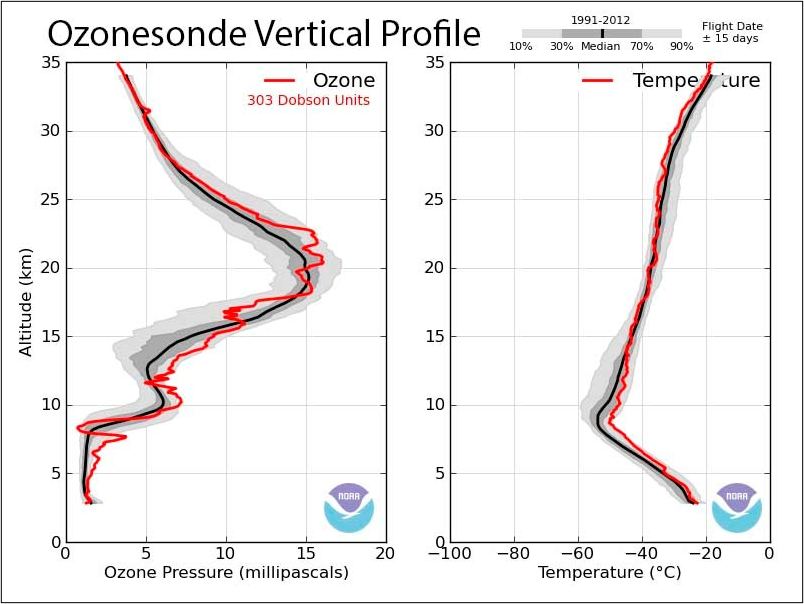The ORNL DAAC recently released the following Atmospheric Tomography Mission (ATom) dataset by Johnson, B.J., et al. (2021):
ATom: Ozone Profiles from Ozonesonde Instrument, Antarctica, Fiji, and Hawaii
This dataset contains ozone measurements from the Ozonesonde instrument in Antarctica, Hawaii, and Fiji taken during the Atom-4 campaign. The Electrochemical Concentration Cell (ECC) Ozonesonde is a balloon-borne instrument that collects ozone concentrations paired with a radiosonde to collect additional meteorological info along a vertical profile. The balloon can ascend to altitudes of 35 km before bursting. Ozone in the stratosphere helps reduce UV radiation that reaches Earth's surface; however, ozone at ground level can negatively influence respiratory health.
The Atmospheric Tomography Mission (ATom) is a NASA Earth Venture Suborbital-2 mission to study the impact of human-produced air pollution on greenhouse gases and on chemically reactive gases in the atmosphere. ATom deployed an extensive gas and aerosol payload on the NASA DC-8 aircraft for systematic, global-scale sampling of the atmosphere, profiling continuously from 0.2 to 12 km altitude. Around-the-world flights were conducted in each of four seasons between 2016 and 2018.
Additional data from ATom and other relevant links can be found on the ORNL DAAC's ATom Project Page.
Citation: Johnson, B.J., and P. D. Cullis. 2021. ATom: Ozone Profiles from Ozonesonde Instrument, Antarctica, Fiji, and Hawaii. ORNL DAAC, Oak Ridge, Tennessee, USA. https://doi.org/10.3334/ORNLDAAC/1910

